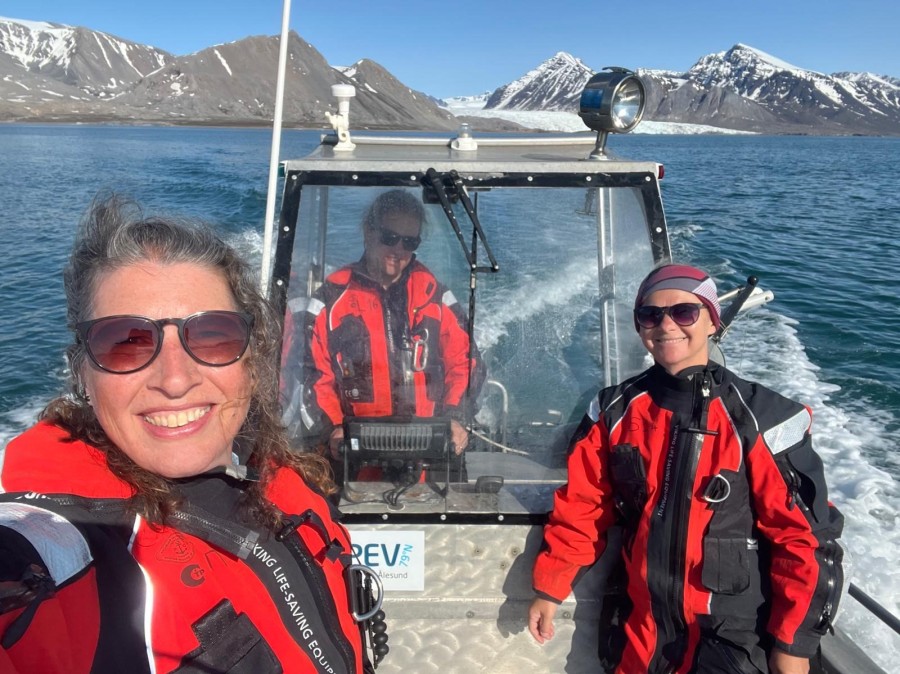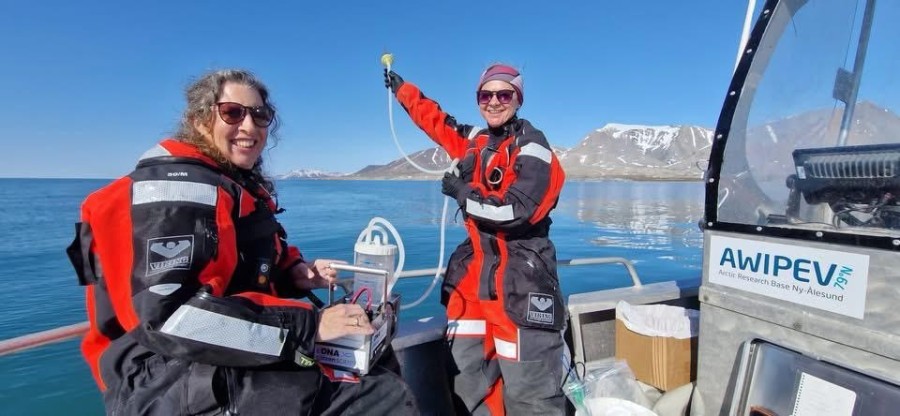weblog 2025 |
|
[home] [weblog] [science] [people] [station] [ny-ålesund] [sightings] [sitemap] [nederlands] |
|
Understanding the persistence and transport of eDNA in Kongsfjorden | 2 July 2025 |
Many scientists are nowadays using environmental DNA (eDNA) to identify the presence of species in sea. The sampling procedure is simple; it requires filtering 1-2 litres of water to collect fragments of DNA released by animals in the water which can be traced back to the species they belong to. In dynamic marine environments, interpreting sampled eDNA can be difficult, as fragments of DNA can be transported by ocean currents away from the location where the animals are actual present. We are scientists from Wageningen University & Research (Carmen, Martine and Hans), starting a new project in the Kongsfjorden this summer. With our project, we want to measure how long and how far from the source can eDNA be detected. We will use this knowledge in coupled transport and ocean models to backtrack the source location of sampled eDNA. But first, we start our project the summer 2025 by collecting eDNA baseline data to quantify the presence of native Polar cod in the Kongsfjorden. Next summer we will measure eDNA concentrations at a location in the bay with known fish and away from this location until no longer detectable.  | |
[home] [weblog] [science] [people] [station] [ny-ålesund] [sightings] [sitemap] [nederlands]

|
|||||||
| [previous] | [present] | [next] | [overview] | ||||
 |
 |
 |
 |
||||
| 20250630, 08:38 | 20250702, 14:31 | 20250702, 17:45 | all items shown with small pics | ||||
| nestpredation | eDNA in Kongsfjorden | the first teams in 2025 |
This page has been given the following keywords: [science] You can click on each keyword to get an overview about related pages. |